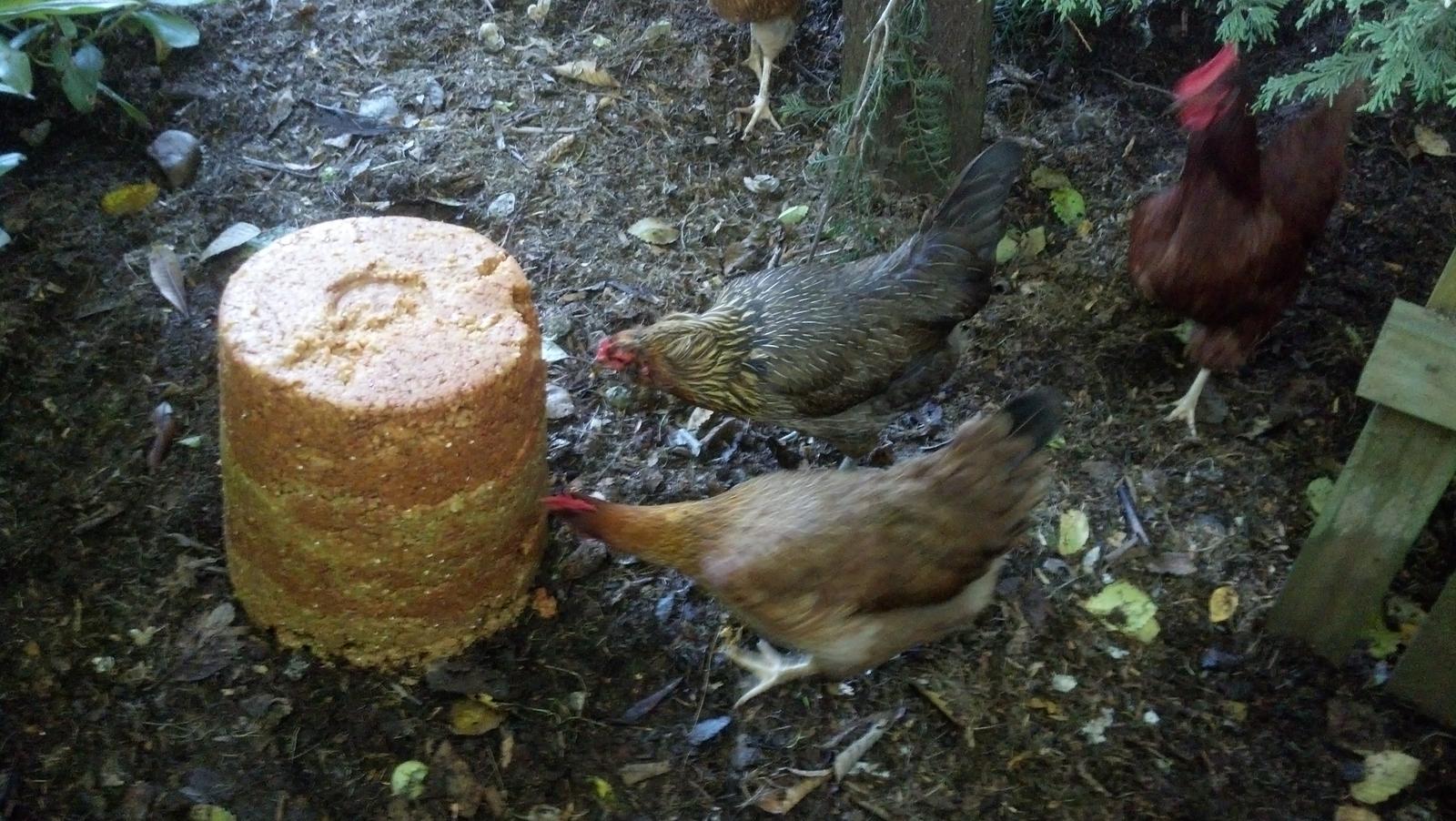barnaclebob
Well-Known Member
Its hard to find reliable extraction %'s so I figured I'd add mine to the pool
I pressed 250lbs of apples Saturday and got between 21 and 22 gallons of cider with an OG of 1.05. 1/3 granny smith, 2/3 honeycrisp. Didn't actually weigh the apples but it was 6x 40lb boxes +11lbs from peoples yards. Water weighs 8.34lbs/gallon *1.05 o.g. *21 gallons = 184lbs of juice. We weighed about 60lbs of pulp for a total of 244lbs. 184/244= .754
Apples were sliced with a restaurant type apple slicer and ground with a 3/4HP Cabela's meat grinder using 1/8" plate, pretty time consuming and grinding was the holdup. It took us 6 hours + cleanup to grind and press the apples.
The press setup is as follows (pics to come soon):
Large strainer bag sitting inside of a metal steamer basket which was sitting on 3/4" wood staves which was inside my 10 gallon bayou classic mash tun. Drain tube went form the valve to my 16 gallon boil kettle, or straight into the fermenter if you don't care about exact volumes.
Mash tun would then be set inside of a wooden frame and the oak pressing boards/column added on top. We used a 4 ton bottle jack for pressure.
Tips for this setup and I suspect many others:
Don't press too much at once or the juice cant escape the middle of the pulp pankake. You shouldn't end up with pulp more than a few inches thick after each pressing.
We pressed, then mixed up the pulp again and pressed one more time. This got another .5 gallons or so.
Let the pulp gravity drain as you grind into the strainer basket. The more juice you can get out before pressing the better.
First do a hand pressing to get as much juice as you can out, see point above.
I pressed 250lbs of apples Saturday and got between 21 and 22 gallons of cider with an OG of 1.05. 1/3 granny smith, 2/3 honeycrisp. Didn't actually weigh the apples but it was 6x 40lb boxes +11lbs from peoples yards. Water weighs 8.34lbs/gallon *1.05 o.g. *21 gallons = 184lbs of juice. We weighed about 60lbs of pulp for a total of 244lbs. 184/244= .754
Apples were sliced with a restaurant type apple slicer and ground with a 3/4HP Cabela's meat grinder using 1/8" plate, pretty time consuming and grinding was the holdup. It took us 6 hours + cleanup to grind and press the apples.
The press setup is as follows (pics to come soon):
Large strainer bag sitting inside of a metal steamer basket which was sitting on 3/4" wood staves which was inside my 10 gallon bayou classic mash tun. Drain tube went form the valve to my 16 gallon boil kettle, or straight into the fermenter if you don't care about exact volumes.
Mash tun would then be set inside of a wooden frame and the oak pressing boards/column added on top. We used a 4 ton bottle jack for pressure.
Tips for this setup and I suspect many others:
Don't press too much at once or the juice cant escape the middle of the pulp pankake. You shouldn't end up with pulp more than a few inches thick after each pressing.
We pressed, then mixed up the pulp again and pressed one more time. This got another .5 gallons or so.
Let the pulp gravity drain as you grind into the strainer basket. The more juice you can get out before pressing the better.
First do a hand pressing to get as much juice as you can out, see point above.



